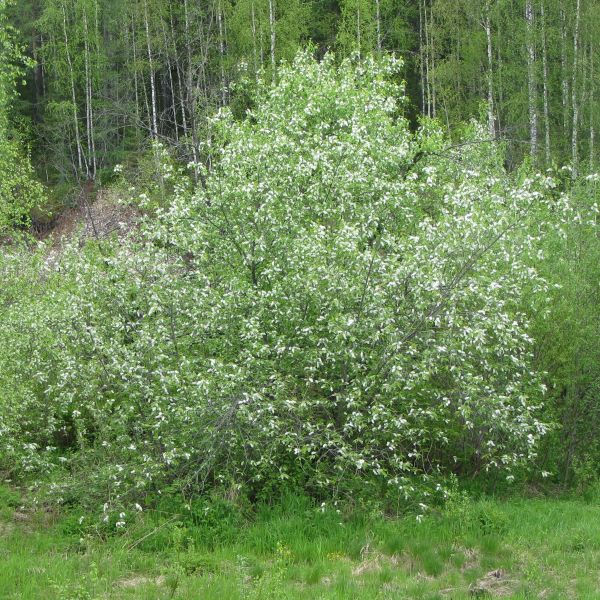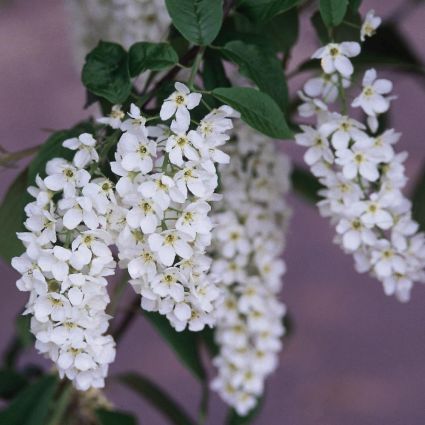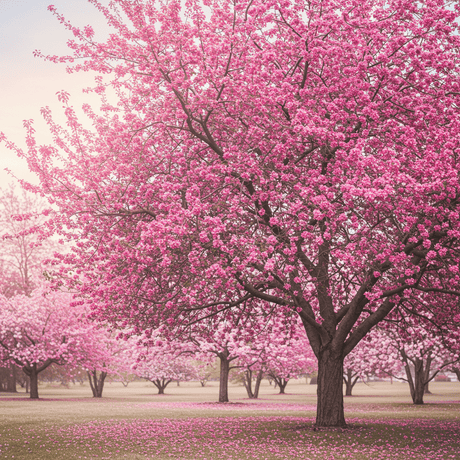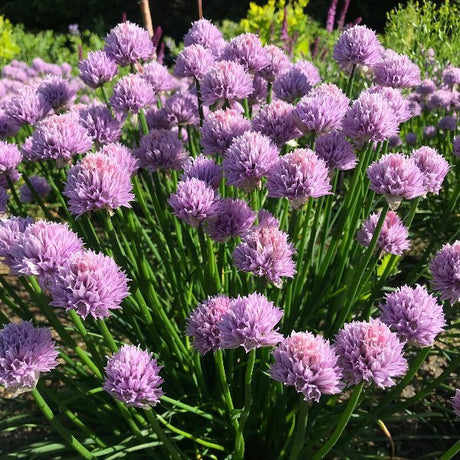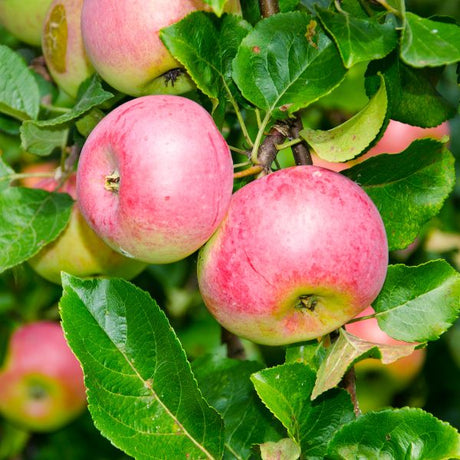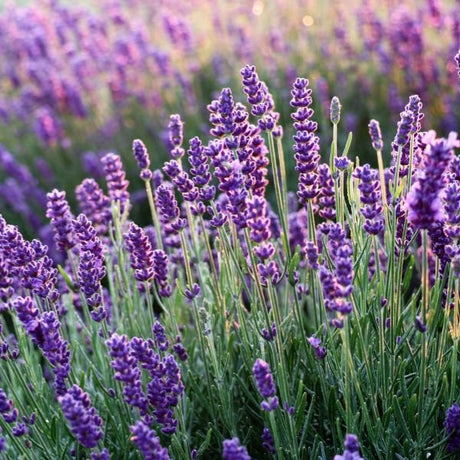May Day Tree
Prunus padus
- Stay Protected with Plant Sentry ™
May Day Tree is backordered and will ship as soon as it is back in stock.
Plant Sentry™
Plant Sentry™

Plant Sentry™ Protected
Your order is protected by our compliance system that:
- Prevents restricted plants from shipping to your state
- Ensures plants meet your state's agricultural requirements
- Protects gardens from invasive pests and diseases
Delivery and Shipping
Delivery and Shipping
Delivery and Shipping
Fast, Safe Plant Delivery
Ships in 3-4 business days • Tracking provided • Weather protected
| Under $50 | $9.99 |
| $50 - $99.99 | $14.99 |
| $100 - $149.99 | $16.99 |
| $150+ | $24.99 |
✓ Zone-specific timing • ✓ Professional packaging • ✓ Health guarantee
Understanding Plant Options
Nature Hills offers plants in two main formats:
- Container Plants: Grown in pots with soil, sized by container volume and plant age
- Bare Root Plants: Dormant plants without soil, sized by height measurements
Container Plant Sizes
Container sizes indicate plant age and growing capacity rather than liquid volume equivalents. Our containers follow industry-standard nursery "trade gallon" specifications, which differ from standard liquid gallon measurements.
Young Plants (6 months to 18 months old)
| Container Size | Actual Volume | Metric Equivalent |
|---|---|---|
| 2" x 2" x 3" | 0.18 - 0.21 dry quarts | 0.20 - 0.23 dry liters |
| 4" Container | 0.31 - 0.87 dry quarts | 0.35 - 0.96 dry liters |
| 4.5" Container | 0.65 dry quarts | 0.72 dry liters |
| 6" Container | 1.4 dry quarts | 1.59 dry liters |
| 1 Quart | 1 dry quart | 1.1 dry liters |
| 5.5" Container | 1.89 dry quarts | 2.08 dry liters |
Established Plants (18 months to 2.5 years old)
| Container Size | Actual Volume | Metric Equivalent |
|---|---|---|
| 2 Quart | 2 dry quarts | 2.2 dry liters |
| #1 Container | 2.26 - 3.73 dry quarts | 2.49 - 4.11 dry liters |
| 5" x 5" x 12" | 3.5 - 4.3 dry quarts | 3.85 - 4.74 dry liters |
Mature Plants (2-4 years old)
| Container Size | Actual Volume | Metric Equivalent |
|---|---|---|
| #2 Container | 1.19 - 1.76 dry gallons | 5.24 - 7.75 dry liters |
| #3 Container | 2.15 - 2.76 dry gallons | 8.14 - 12.16 dry liters |
Large Plants (3-5 years old)
| Container Size | Actual Volume | Metric Equivalent |
|---|---|---|
| #5 Container | 2.92 - 4.62 dry gallons | 12.86 - 20.35 dry liters |
| #6 Container | 5.25 - 6.01 dry gallons | 23.12 - 26.42 dry liters |
| #7 Container | 5.98 - 6.53 dry gallons | 26.34 - 28.76 dry liters |
Bare Root Plants
Bare root plants are sold by height from the root system to the top of the plant. Plants may exceed minimum height requirements.
Common Sizes:
- Trees: 1 foot, 2 feet, 3 feet, 4 feet, 5 feet, 6 feet
- Shrubs & Perennials: 1 foot, 18 inches, 2 feet
Important Notes
Container Volume Specifications
- Trade Gallon Standard: Our containers follow industry-standard "trade gallon" specifications established by the American National Standards Institute (ANSI Z60.1) for nursery stock
- Volume Variations: Actual soil volume may vary due to plant root systems and growing medium settlement
- Age Indicators: Container size primarily indicates plant age and maturity rather than liquid volume equivalents
Growing Conditions
- Plant size can vary based on variety and growing conditions
- Container size helps indicate plant maturity and establishment level
- Larger containers generally mean more established root systems and faster landscape establishment
Seasonal Availability
- Bare root plants are available seasonally when dormant
- Container plants are available throughout the growing season
- Specific varieties may have limited availability in certain sizes
Questions?
For questions about specific plant sizes or availability, please contact our plant experts who can help you choose the right size for your landscape needs.
Plant Highlights
May Day Tree highlights at a glance!
-
Botanical Name
-
Brand
-
Growing Zones3, 4, 5, 6, 7
-
Growth RateModerate
-
Mature Height
-
Mature Width
-
Leaf Color
-
Flower Color
-
Fall Color
-
Pollinator FriendlyYes
-
Bloom PeriodLate Spring
Characteristics
Where To Plant
When To Prune
- Late Winter
Water & Moisture Needs
- Moderate
Sunlight Needs
Soil Needs
- Widely Adaptable
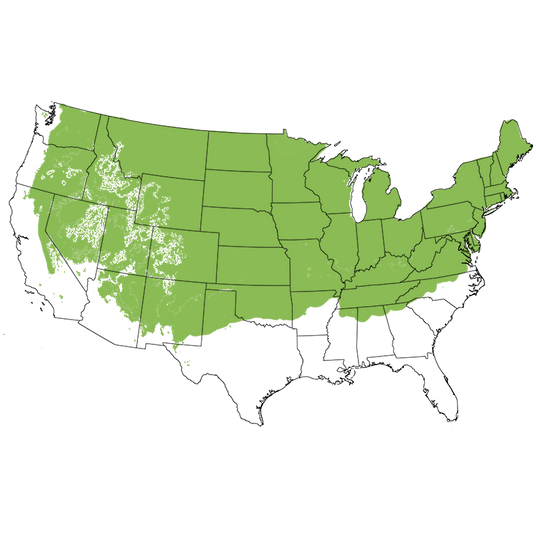
Growing Zones
Early Blooms & Bird-Friendly Fruit
Welcome the season with one of spring's earliest blooming marvels, the May Day Tree (Prunus padus), affectionately known as the European Bird Cherry. This charming tree bursts into bloom in early spring with delightfully fragrant white flowers that dangle in slender, drooping clusters like pearly chandeliers.
As one of the first trees to leaf out, it brings greenery and life to the landscape while others are still waking up! A dependable early bloomer with ornamental flair, its blossoms are not just beautiful, they’re a magnet for pollinators.
With a rounded form and graceful branching, this tree matures into a lovely specimen about 20 to 40 feet tall and wide. Its leaves are a rich dark green throughout the summer, then shift to shades of golden yellow and red in fall, offering multi-season interest. In late spring to early summer, small black cherries ripen, only about a third of an inch in size, but they're a gourmet treat for birds.
Whether you’re planting for pollinators, feathered friends, or simply for its airy spring charm, this tree delivers!
>>Jump to Planting & Care Instructions
Key Features
- Early spring bloomer with fragrant, white flowers
- Upright-rounded form; available in clump or single-stem
- Dark green summer foliage
- Brilliant yellow to red autumn color
- Small black cherries attract birds in late spring or early summer
- Moderate growth rate and life span
- Cold-hardy to USDA Zone 2
Landscaping Uses
The May Day Tree reaches 15 - 20 feet tall and wide, forming a rounded silhouette that lends softness to the landscape!
- Accent tree in lawns or meadows
- Mixed borders or wildlife gardens
- Windbreaks or privacy hedges, when planted in clump form
- Bird, wildlife, and pollinator gardens
- Along driveways or property lines
- Naturalized areas or informal woodland edges
- Small tree choice for larger urban lots
Care and Maintenance
Native to northern Europe and parts of Asia, the May Day Tree has been cherished in folk traditions and used in some traditional herbal preparations. It is well-adapted to cold climates and thrives in USDA growing zones 2 through 6. A close cousin to our native Chokecherry and other Prunus species, it shares their toughness and wildlife value. Despite being so closely related, the incredibly bitter fruit should not be consumed by humans.
As a deciduous tree, the May Day Tree is well-suited to colder regions and is prized for its cold-hardiness, adaptability to a range of soils, and wildlife value.
- Planting Time: Spring or fall
- Sun Needs: Full sun to part shade
- Soil Needs: Adaptable to various soils; prefers moist, well-drained soil; tolerates clay and alkaline conditions
- Moisture Needs: Average; more tolerant of moisture than drought
- Mulch: Apply a 3-4 inch layer of arborist mulch to retain moisture and protect the root zone
- Fertilization Needs: Use a balanced slow-release fertilizer in early spring if needed
- Pruning Info: Prune after flowering; remove any crossing branches and maintain desired shape; blooms on old wood
- Renewal Pruning: Not typically needed, but can be done to maintain shape if growing in clump form
- Special Needs/Perks:
- Deer tend to leave it alone
- Cold-hardy
- Low maintenance
- Can tolerate compacted urban soils
- Not fussy about pH
- Pollination Needs: Self-fertile; no pollinator needed
Make Way for May Day!
Say “Happy May Day!” to drab early spring landscapes and welcome this fragrant, bird-friendly beauty into your garden. With fluttering blossoms, cheerful fall colors, and tasty treats for birds, the European Bird Cherry adds ornamental value and biodiversity. A true multi-season delight, it's a must for northern gardeners.
Buy now and Nature Hills will ship at the appropriate planting time for your growing zone.
Frequently Asked Questions
Is the May Day Tree invasive?
In some northern climates, it can spread if unmanaged. Check with your County Extension Office or opt for responsible placement. Nature Hills uses Plant Sentry™ to ensure invasive plants won’t ship into sensitive locations.
Do birds eat the fruit of the May Day Tree?
Yes! Birds love the small, dark cherries, making it excellent for wildlife gardens.
Can I grow a May Day Tree in Zone 3?
Absolutely. It thrives in Zones 2 to 6 and is extremely cold-hardy.
Does the May Day Tree have thorns or toxic parts?
No thorns, but like other Prunus species, the seeds contain compounds that can be toxic in large amounts if consumed by humans.
How fast does the European Bird Cherry grow?
It has a moderate growth rate, around 12–24 inches per year, depending on conditions.
Why Order From Nature Hills Nursery?
Nature Hills Nursery is committed to bringing the highest-quality plants to your door. Join thousands of happy customers and get all your planting needs at Nature Hills! We guarantee our plants for their first year! Check out lifelong support and landscaping ideas in our #ProPlantTips Garden Blog!

